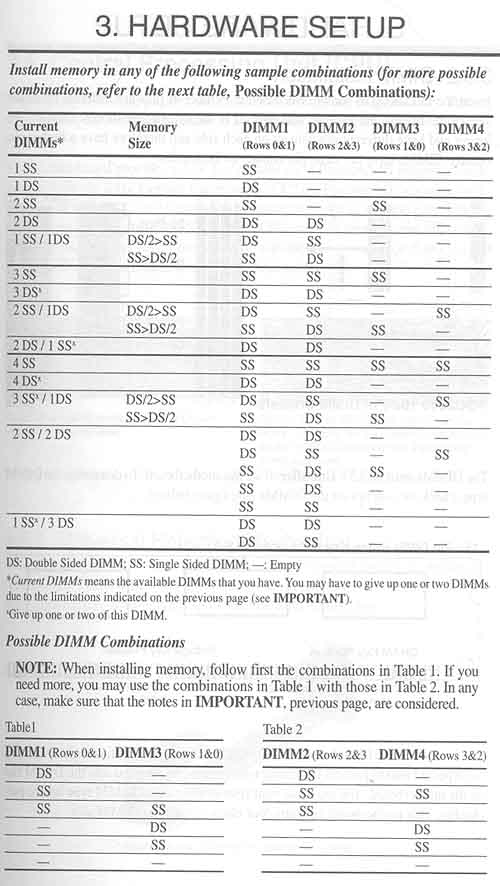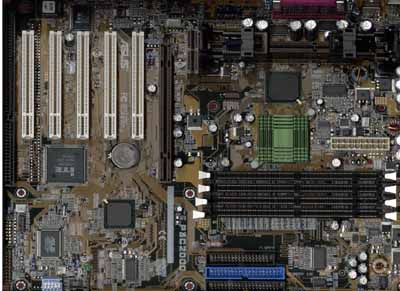i820 Motherboard Roundup - January 2000
by Anand Lal Shimpi on January 28, 2000 2:44 AM EST- Posted in
- Motherboards
ASUS P3C-2000
ASUS is another name in the motherboard industry that we often associate with quality and reliability. Their entry into this comparison was a unique one since it featured no RIMM slots; instead, courtesy of the on-board Memory Translator Hub, it featured 4 DIMM slots.
This makes the P3C-2000 one of the more affordable solutions in the roundup, not as a motherboard, since the ASUS name does carry an associated price premium, but as a system solution since PC100 SDRAM is much cheaper than 800MHz RDRAM.
The fact that there are 4 DIMM slots on the P3C-2000 should raise some eyebrows because, after all, we mentioned earlier that a single MTH only provides 4 RAS lines. This means that you can either install 2 double sided DIMMs or 4 single sided DIMMs, and since the ASUS P3C-2000 only features a single MTH, that means that there are some stipulations that go along with installing DIMMs in these memory banks.
One of the most interesting requirements is that, if more than one DIMM slot is populated, then the first DIMM slot must have the largest sized DIMM installed in it.
Here is a list of the possible memory configurations taken from the P3C-2000’s manual:

ASUS has always been known as an enthusiast’s board. While they may not receive the praise that companies like ABIT do for putting hundreds of FSB settings on their motherboards, from the roots, ASUS has been an overclocker’s board. Remember back to the days of the HX chipset when the ASUS T2P4 was the first motherboard to ever boast an 83MHz FSB setting, which was something that previously hadn’t been seen on a motherboard.
Following in that tradition, the P3C-2000 features the option of increasing the I/O voltage (the voltage supplied to the DRAM, chipset, AGP and PCI buses) but, even more importantly, the voltages supplied to the MCH and MTH. The P3C-2000 also allows you to set the SDRAM clock to be either equal to the FSB frequency or at 3/4 of the FSB frequency. This let's you run your memory clock at 100MHz while your FSB is running at 133MHz or at a full 133MHz if you have memory that can handle the increased speed.
From an overclocking standpoint, the P3C-2000 supports the largest range of FSB frequencies out of the bunch, supporting frequencies up to 180MHz.
Continuing the trend of uniqueness with the P3C-2000 are the optional ISA slots that ASUS offers with the motherboard. While our particular sample featured an ISA bridge and a single shared ISA slot (and 5 PCI slots), ASUS also offers a configuration option with 2 ISA slots and 4 PCI slots as well as an option to remove all ISA slots and have just a 5 PCI slot configuration.
The P3C-2000 was also one of two motherboards in this roundup that feature an AGP Pro connector, which is a very interesting fact since the board is a single CPU motherboard and you would expect only the high end motherboards to feature an AGP Pro connector.
The stability of the P3C-2000 was up there with the AOpen boards, and it also got our recommendation for a stable i820 motherboard.











1 Comments
View All Comments
renterpoint - Wednesday, April 13, 2022 - link
This is a very nice motherboard. Thank you for posting such a nice piece of information.https://renterpoint.com/suv